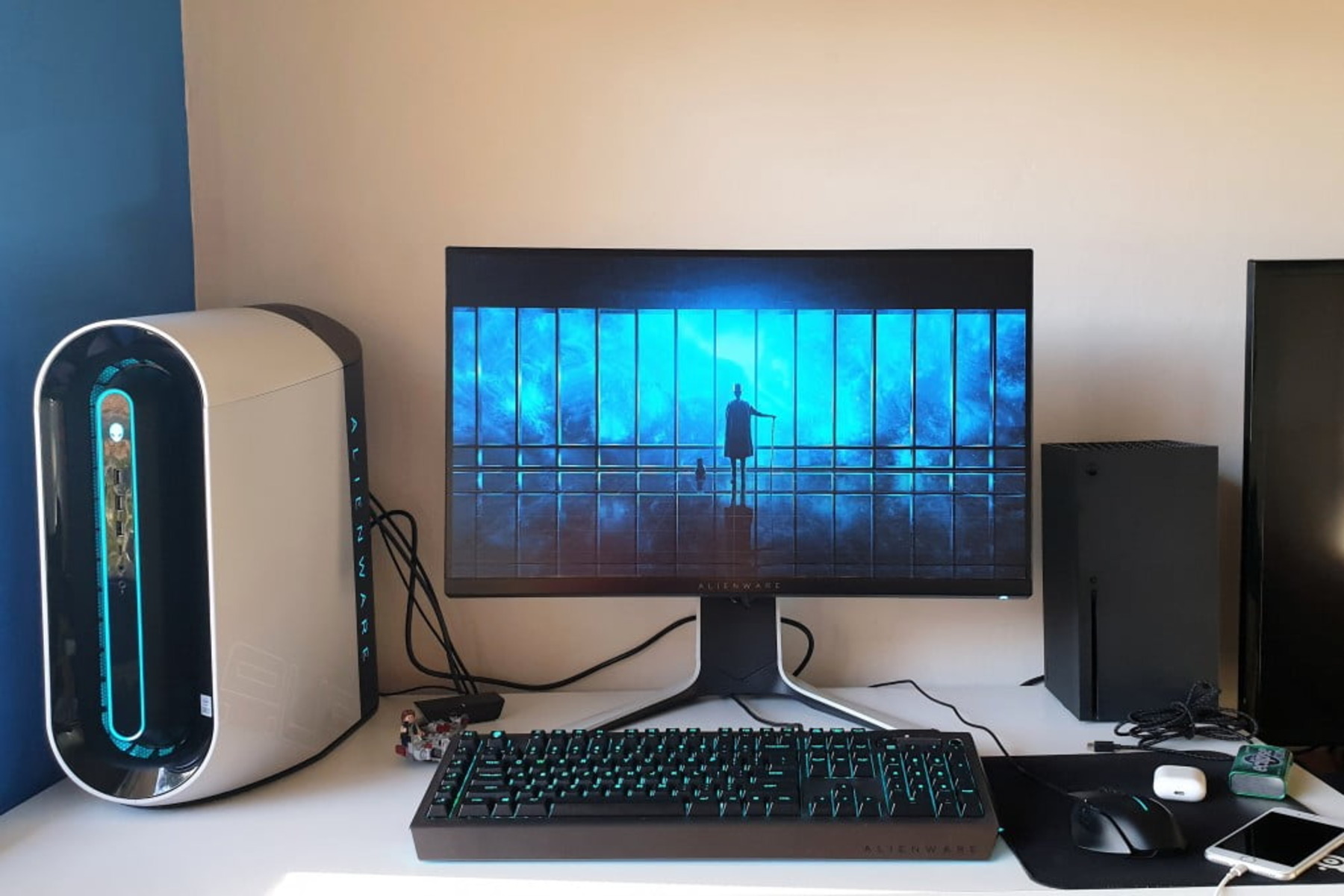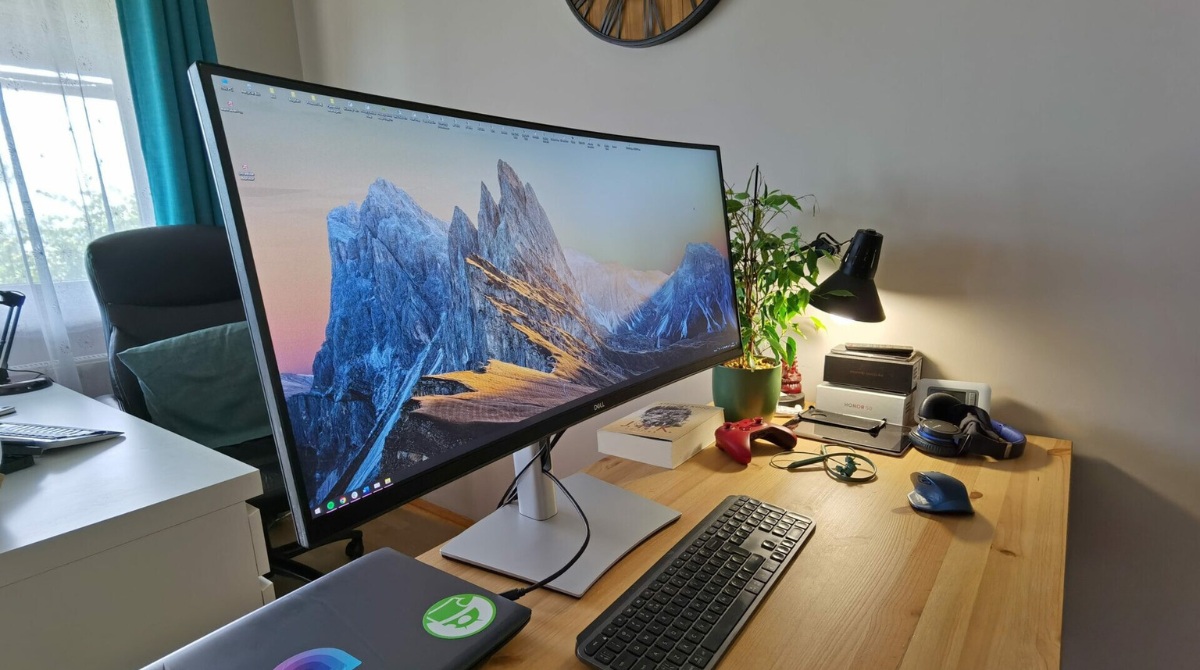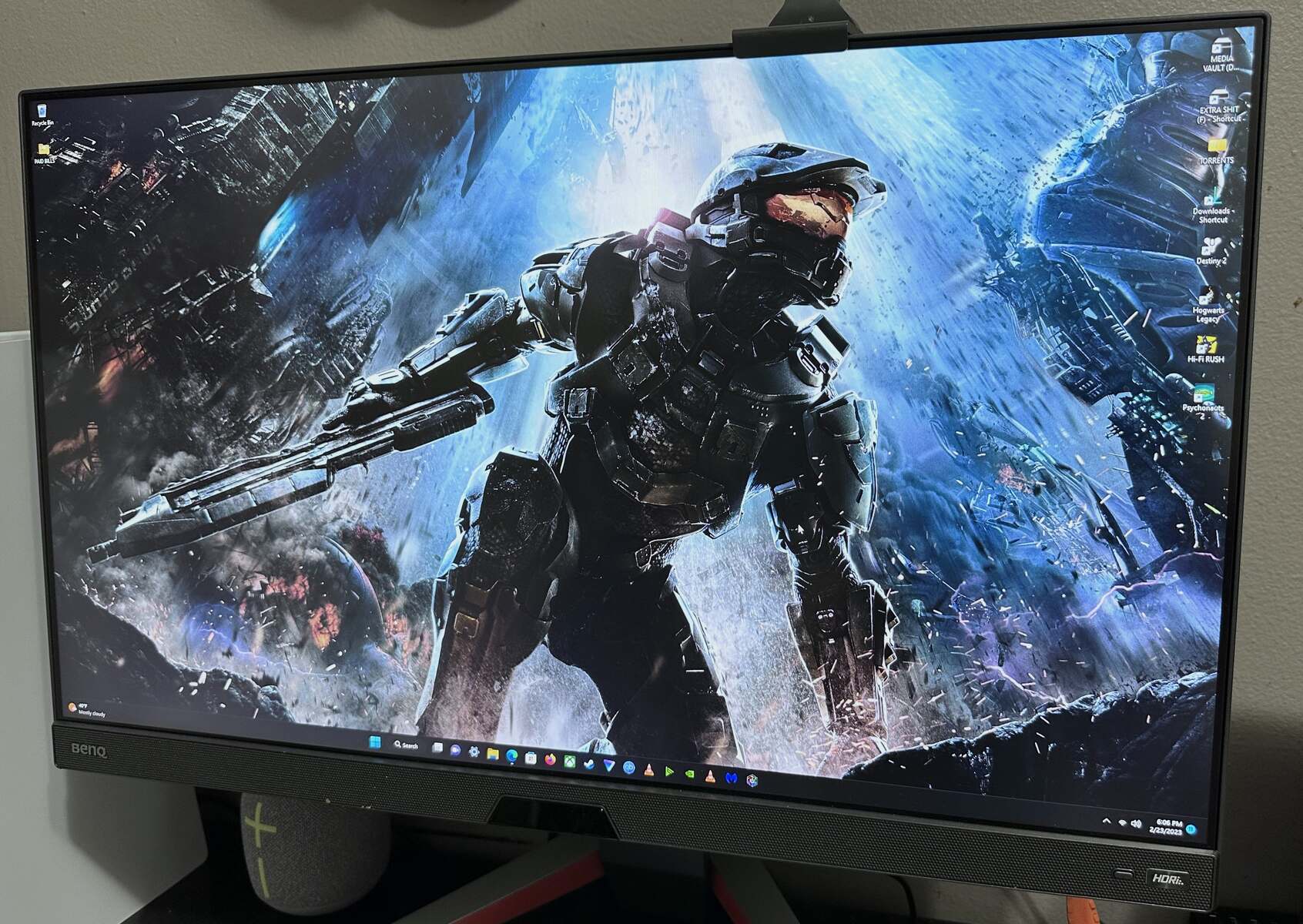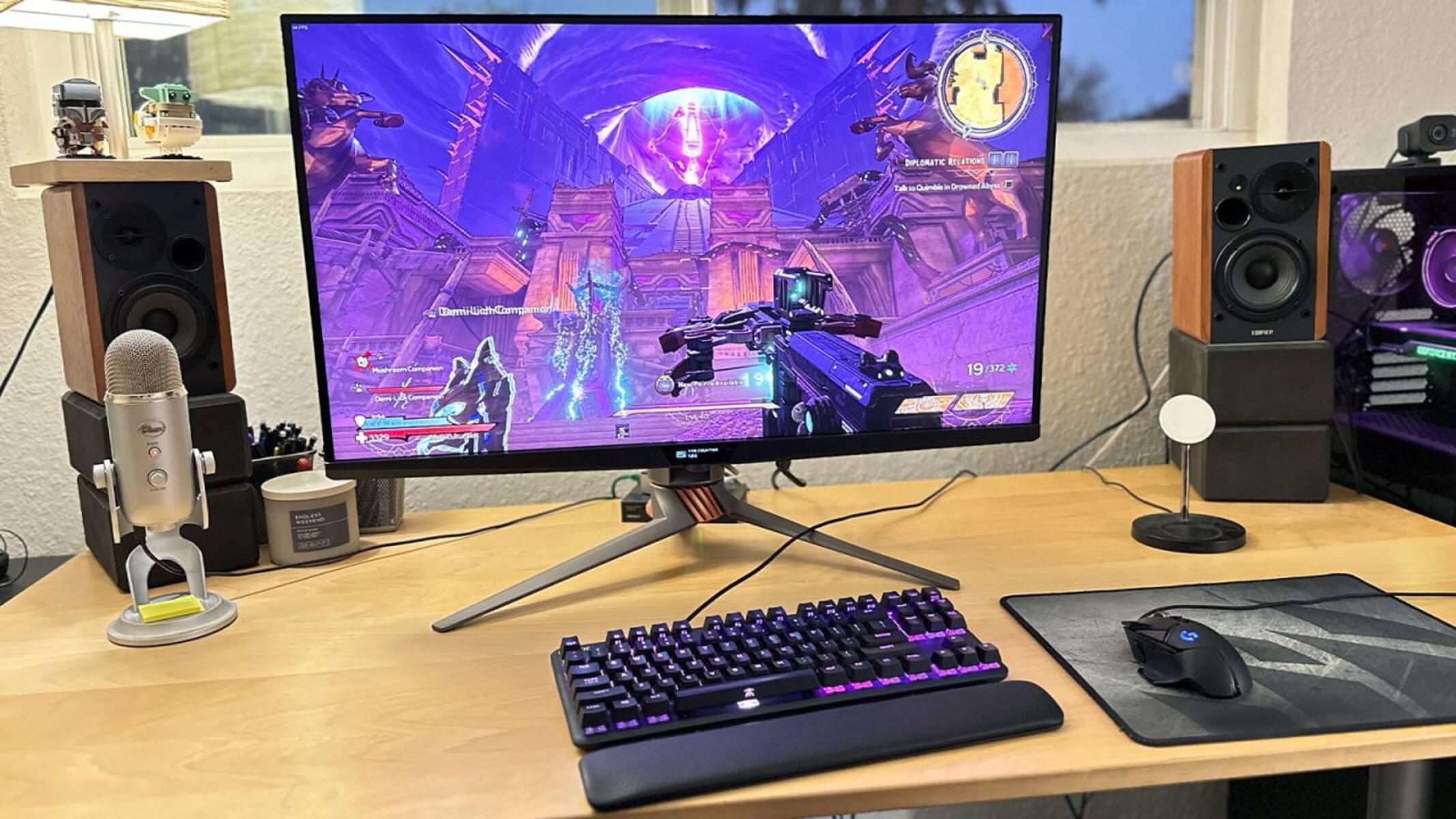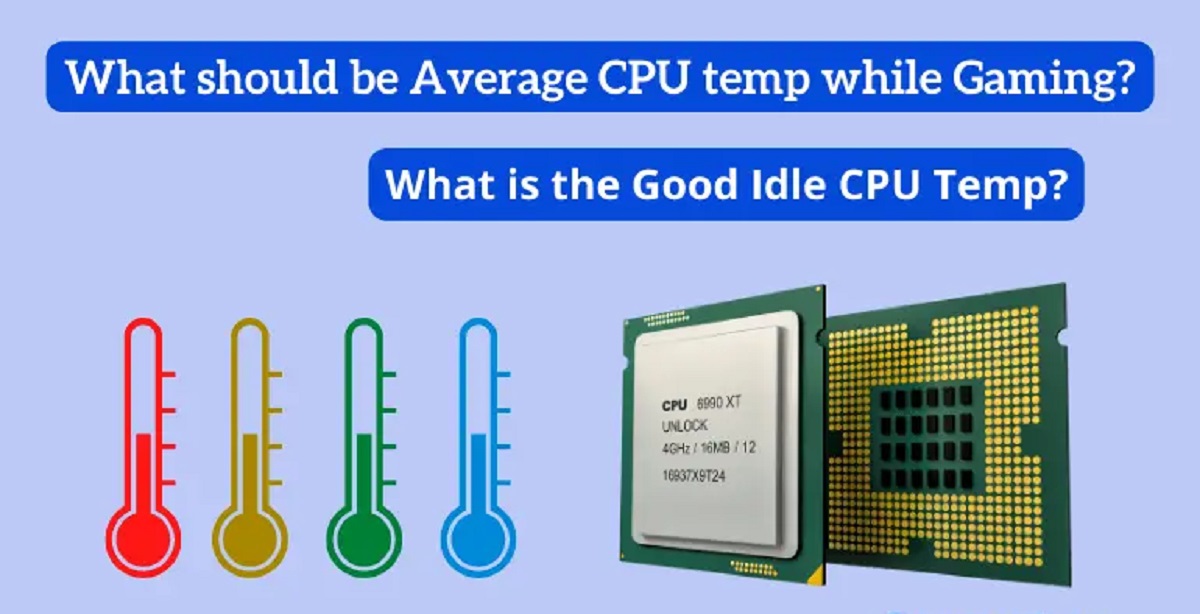Introduction
Gaming has become a popular form of entertainment, with millions of gamers worldwide enjoying their favorite titles on various platforms. When it comes to optimizing their gaming experience, one crucial aspect to consider is the choice of monitor.
While a regular monitor may suffice for general computing tasks, dedicated gaming monitors offer specific features and technologies that can significantly enhance gameplay. In this article, we will explore the key differences between a gaming monitor and a regular monitor to help you make an informed decision for your gaming setup.
Gaming monitors are designed with specific features and specifications that cater to the needs of gamers. These monitors are built to provide stunning visuals, smooth motion, and reduced input lag, all of which contribute to an immersive gaming experience.
On the other hand, regular monitors are typically designed for general use, such as browsing the internet, word processing, or viewing multimedia content. They may lack the specialized hardware and features necessary to offer the same level of performance and visual quality as gaming monitors.
Now that we have a brief overview of the two types of monitors, let’s compare the key differences between a gaming monitor and a regular monitor in terms of resolution, refresh rate, response time, panel type, features, connectivity options, and price.
Resolution
Resolution refers to the number of pixels that a monitor can display horizontally and vertically. It determines the level of detail and clarity in the images displayed on the screen. Gaming monitors typically offer higher resolutions compared to regular monitors.
Gaming monitors often provide resolutions such as 1080p (1920×1080), 1440p (2560×1440), or even 4K (3840×2160) for more immersive visuals. The higher pixel count allows gamers to see finer details in games, resulting in a more lifelike and vibrant gaming experience.
Regular monitors, on the other hand, commonly come with standard resolutions like 720p (1280×720) or 1080p (1920×1080) for everyday tasks. While these resolutions are suitable for most general purposes, they may lack the level of detail and sharpness that gaming enthusiasts seek.
When choosing a monitor for gaming, the higher the resolution, the more graphics-intensive your games can be, but keep in mind that higher resolutions may require a more powerful graphics card to handle the increased workload.
In summary, gaming monitors typically offer higher resolutions compared to regular monitors, allowing for more detailed and visually stunning gameplay. However, it’s essential to consider the compatibility with your system’s hardware before opting for higher resolutions to ensure optimal performance.
Refresh Rate
The refresh rate of a monitor refers to the number of times the screen refreshes or updates the image per second. It is measured in Hertz (Hz). A higher refresh rate results in smoother and more fluid motion on the screen, crucial for an immersive gaming experience.
Gaming monitors are known for their higher refresh rates compared to regular monitors. They often offer refresh rates of 144Hz, 240Hz, or even higher. A higher refresh rate allows for more frames to be displayed per second, reducing motion blur and providing a more responsive gaming experience.
Regular monitors typically have a standard refresh rate of 60Hz, which is adequate for everyday tasks like web browsing or productivity work. However, in fast-paced gaming scenarios, a lower refresh rate can result in motion blur and make it harder to track moving objects or react quickly.
Having a high refresh rate on a gaming monitor can give you a competitive edge in games that rely on quick reflexes, such as first-person shooters or racing games. It allows for smoother gameplay and reduces input lag, resulting in a more enjoyable and responsive gaming experience.
It’s worth noting that to take full advantage of higher refresh rates, your computer’s graphics card must be capable of producing enough frames per second (FPS) to match the monitor’s refresh rate. Otherwise, the benefits of a high refresh rate may not be fully realized.
In summary, gaming monitors offer higher refresh rates compared to regular monitors, resulting in smoother motion and reduced motion blur. If you’re a serious gamer or value fluid gameplay, investing in a high refresh rate gaming monitor can greatly enhance your gaming experience.
Response Time
Response time is another important factor to consider when comparing gaming monitors and regular monitors. It refers to the time it takes for a pixel to change from one state to another, typically measured in milliseconds (ms). A lower response time means faster pixel transitions and less ghosting or motion blur.
Gaming monitors are specifically optimized for fast-paced action and usually offer shorter response times compared to regular monitors. They often feature response times of 1ms or 2ms, ensuring minimal ghosting and blur during fast-motion scenes. This quick response time allows for sharper and more precise visuals, particularly in competitive gaming scenarios.
Regular monitors, on the other hand, tend to have higher response times, often ranging from 5ms to 10ms or higher. While suitable for general purposes like web browsing or watching videos, the higher response times can result in visible motion blur or trailing effects during fast-moving scenes in games.
A fast response time is particularly important in genres such as first-person shooters or sports games, where the ability to react quickly and accurately to in-game actions is crucial. With a gaming monitor’s lower response time, you’ll have a more competitive advantage and a smoother gaming experience overall.
It’s important to note that response time can vary depending on the specific technology used by the monitor, such as TN (Twisted Nematic) panels that typically have faster response times compared to IPS (In-Plane Switching) panels, which prioritize color accuracy and wider viewing angles.
In summary, gaming monitors typically feature shorter response times compared to regular monitors, ensuring minimal ghosting and blur during fast-paced gameplay. If you’re an avid gamer or prioritize smooth visuals, investing in a gaming monitor with a low response time can greatly enhance your overall gaming experience.
Panel Type
The panel type of a monitor refers to the technology used to create the display. It plays a significant role in determining factors such as color accuracy, viewing angles, and response times. Different panel types offer varying strengths and weaknesses, making it an essential consideration when choosing between a gaming monitor and a regular monitor.
Gaming monitors commonly use three primary panel types: Twisted Nematic (TN), In-Plane Switching (IPS), and Vertical Alignment (VA).
Twisted Nematic (TN) panels are known for their fast response times, making them ideal for fast-paced gaming. They offer high refresh rates, low input lag, and affordable pricing. However, TN panels typically have narrower viewing angles and may not deliver the same level of color accuracy and vibrancy as IPS or VA panels.
In-Plane Switching (IPS) panels prioritize color accuracy and wide viewing angles, making them popular among graphic designers and content creators. They offer vibrant and accurate colors but generally have slightly slower response times compared to TN panels. IPS panels are well-suited for gamers who value color reproduction and visual quality over lightning-fast response times.
Vertical Alignment (VA) panels strike a balance between TN and IPS panels. They offer deeper contrast ratios, better black levels, and improved viewing angles compared to TN panels. However, VA panels may have slightly slower response times, leading to potential motion blur in fast-paced gaming scenarios.
Regular monitors typically feature various panel types, including TN, IPS, and VA panels. The choice of panel type depends on the intended use of the monitor. For tasks like web browsing, office work, or multimedia consumption, IPS panels are often preferred for their superior color accuracy and wider viewing angles.
When it comes to gaming, the choice of panel type depends on individual preferences. Competitive gamers who prioritize fast response times and high refresh rates often opt for TN panels. Those who value vibrant visuals and color accuracy may lean towards IPS panels, while VA panels can be a suitable middle ground.
In summary, gaming monitors and regular monitors may utilize different panel types, each offering specific advantages and disadvantages. Understanding the strengths and weaknesses of each panel type allows you to make an informed decision based on your gaming and visual preferences.
Features
When comparing gaming monitors and regular monitors, it’s essential to consider the additional features they offer. Gaming monitors often come equipped with various features designed to enhance the gaming experience, while regular monitors may prioritize functionality for everyday tasks.
One common feature found in gaming monitors is adaptive sync technology, such as NVIDIA G-Sync or AMD FreeSync. These technologies sync the monitor’s refresh rate with the graphics card’s output, reducing screen tearing and stuttering for a smoother gameplay experience.
Gaming monitors may also incorporate specialized gaming modes or presets that optimize the display settings for different genres, such as FPS, RTS, or RPG. These presets adjust factors like color saturation, contrast, and sharpness to emphasize important visuals in specific game types.
Another key feature found in gaming monitors is a low input lag, which refers to the delay between the user’s input (such as pressing a button) and the corresponding action appearing on the screen. A low input lag is crucial for fast and responsive gameplay, especially in competitive gaming.
RGB lighting is a popular feature in gaming monitors, allowing users to customize lighting effects and colors to match their gaming setup. It adds a visually appealing element to the gaming experience and can be synchronized with other RGB peripherals.
Regular monitors, on the other hand, may focus on features that enhance productivity, such as adjustable stands for ergonomic positioning, built-in speakers, or built-in USB hubs for easy connectivity with other devices.
While gaming monitors generally prioritize gaming-centric features, it’s worth noting that some regular monitors may also include a few gaming-related features. It’s essential to evaluate your specific needs and preferences to determine which features are important to you.
In summary, gaming monitors often come equipped with specialized features like adaptive sync, gaming presets, low input lag, and RGB lighting, aimed at enhancing the gaming experience. Regular monitors may prioritize features that enhance productivity or offer general functionality for everyday tasks.
Connectivity Options
When it comes to connectivity options, both gaming monitors and regular monitors offer various ports and connections to connect to your computer or other devices. However, gaming monitors often provide a wider range of connectivity options to accommodate gaming peripherals and other gaming-related devices.
Gaming monitors commonly feature multiple HDMI ports and DisplayPort connections, allowing you to connect gaming consoles, PCs, and other devices simultaneously. DisplayPort is particularly favored by gamers as it supports higher refresh rates and resolutions compared to HDMI.
Additionally, gaming monitors may also include USB ports for easy connection to gaming controllers, keyboards, or mice, providing a convenient way to charge devices or connect peripherals directly to the monitor.
Regular monitors typically offer the standard connectivity options, such as HDMI and DisplayPort, but may have fewer ports compared to gaming monitors. They often prioritize connectivity for general computing tasks, such as connecting a laptop or desktop computer.
It’s worth noting that the specific connectivity options available on a monitor can vary depending on the model and brand. It’s important to check the specifications and ensure that the monitor you choose has the necessary ports to connect your devices.
In summary, gaming monitors tend to offer a broader range of connectivity options compared to regular monitors, including multiple HDMI and DisplayPort connections and USB ports for gaming peripherals. Regular monitors may provide standard connectivity options but may have fewer ports overall.
Price
Price is a crucial factor to consider when comparing gaming monitors and regular monitors. Generally, gaming monitors tend to be more expensive than regular monitors due to the additional features and technologies they offer.
Gaming monitors often come with specialized gaming-centric features, such as high refresh rates, low response times, adaptive sync technology, and customizable RGB lighting. These features contribute to their higher price point compared to regular monitors.
In addition, gaming monitors frequently prioritize visual quality, offering higher resolutions like 1440p or even 4K, which can also contribute to a higher price. The use of specific panel technologies, such as IPS or VA, further adds to the cost.
Regular monitors, on the other hand, are typically more affordable as they are designed for general use rather than emphasizing gaming-specific features. They may still offer respectable image quality and functionality at a lower price point.
It’s essential to determine your budget and evaluate the features you prioritize in a monitor. If you are a serious gamer and want the best gaming experience possible, investing in a higher-priced gaming monitor may be worth it. However, if gaming is not your primary focus, a regular monitor may provide adequate performance at a more budget-friendly cost.
It’s worth noting that the price range for both gaming monitors and regular monitors can vary significantly depending on factors such as brand, size, resolution, panel type, and additional features. It’s always recommended to research and compare prices across different models and brands before making a decision.
In summary, gaming monitors generally come at a higher price point compared to regular monitors due to the inclusion of gaming-specific features and technologies. Regular monitors, designed for general use, tend to be more affordable while still offering satisfactory performance.
Conclusion
Choosing between a gaming monitor and a regular monitor depends on your specific needs and preferences. Gaming monitors are optimized for immersive gameplay, offering higher resolutions, faster refresh rates, lower response times, and gaming-centric features. They are ideal for serious gamers who prioritize performance and visual quality.
Regular monitors, on the other hand, provide functionality for everyday tasks such as web browsing, productivity work, and multimedia consumption. They tend to be more budget-friendly and offer a range of connectivity options.
When deciding which type of monitor to choose, consider factors like the type of games you play, your budget, desired visual quality, and the specifications of your computer setup. If you’re a competitive gamer or want the best gaming experience possible, investing in a gaming monitor is recommended. However, if gaming is not the primary focus and you require a monitor for general computing tasks, a regular monitor can meet your needs at a more affordable price.
Ultimately, the choice between a gaming monitor and a regular monitor comes down to personal preference and priorities. Assessing the specific features, performance, and price of each monitor will help you make an informed decision that aligns with your gaming and computing requirements.










